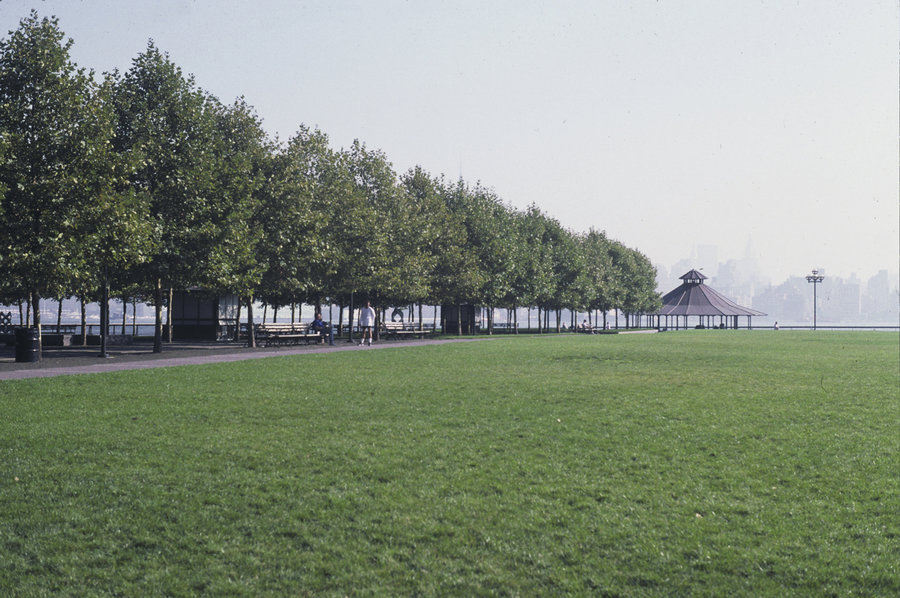Access to the Hudson can certainly ease the monotony of city dwelling—the honking horns and clanging of passing trucks. The Fund for a Better Waterfront (FBW) was formed around the simple idea that the waterfront should be free and open to the public. Almost a quarter century later, the organization is still advocating for public parks along the water’s edge.
“Essentially, we are advocates of proper planning,” says Ron Hine, the executive director of the FBW. “We can’t overstress the importance of great design.”
Hine believes that through open communication—especially discussions at city council meetings—the city and its residents can create exemplary riverside parks like Pier A and Pier C on the southern waterfront.
“When waterfront industries left, a golden opportunity presented itself,” says Hine. “That was to develop highly spectacular public parks.”
Many features can turn a waterfront development project into a truly vibrant and integral part of the community, Hine says. The most important are creating ground-floor storefronts, extending street grids to the waterfront, hiding parking garages inside city blocks, and having plenty of shady trees.
But creating the perfect design for a public waterfront park is what Hine and his organization really want. “People who live in the city have a distinct need for these kinds of spaces,” Hine says. “Spaces that suit their needs.”
Currently, the FBW is advocating for the redevelopment of the central waterfront, in particular, an area of city-owned space on Sinatra Drive between Fourth and Fifth Streets.
“The term of the day is ‘complete streets’,” Hine says. Not just designed for cars, these new roadways allow for more spacious bike lanes and safer crosswalks for pedestrians. Roads, not “thoroughfares,” he says.
While a plan is in the works to upgrade that stretch of road and streamline traffic at the intersection, Hine says that more can be done: “The street is too wide, which invites speeding. It’s really just wasted open space.”
The FBW would ultimately like to extend the waterfront walkway and park space from Pier C past the intersection at Fourth Street. “Public parks are critical to having a healthy, satisfying lifestyle,” Hine says. “Recreation for your health but more importantly for your peace of mind.”
What Was Almost Lost
Pier A is one example of a successful waterfront project, with long promenades and grassy inlays. But back in 1990, when the FBW was founded, a plan was proposed to build a 33-story office building on Pier A right about where sunbathers bask today. After two referenda, the FBW won, and the project was quickly abandoned.
“It was a pretty amazing feeling,” says Hine, recalling the unlikely victory. “We fought against these big-time developers. When Pier A was finally built, it was like opening up a floodgate.”
On any fine day, the park is a sunny space to read a book, throw a Frisbee, meet up with friends, or make new ones. According to Hine, the park has won numerous awards from organizations like the NJ Chapter of the American Planning Association and has become a model for waterfront development.
“People flock to that part of the waterfront,” says Hine. There is an “obvious need” for more waterfront parks today, and that’s exactly what the FBW is advocating for.
Funded by private grants and personal donations, the organization hosts a number of events to spread the word about preserving waterfront space.
“Take Me To The River,” the FBW’s annual fundraiser, has been growing in recent years, and is a great way to get involved with the organization. “It brings everyone together to talk about our goals,” says Hine. “The communication is what really matters.”
Although details are still being worked out, last year’s event was held at the Elks Club in November, and hosted more than 100 people. In addition to the fundraiser, this year’s events include “The Storm Next Time: Will Hoboken Be Ready?” in April, and “FBW Open House” in the fall.—07030
FBW website:
betterwaterfront.org
To volunteer:
/betterwaterfront.org/get-involved/volunteer/
